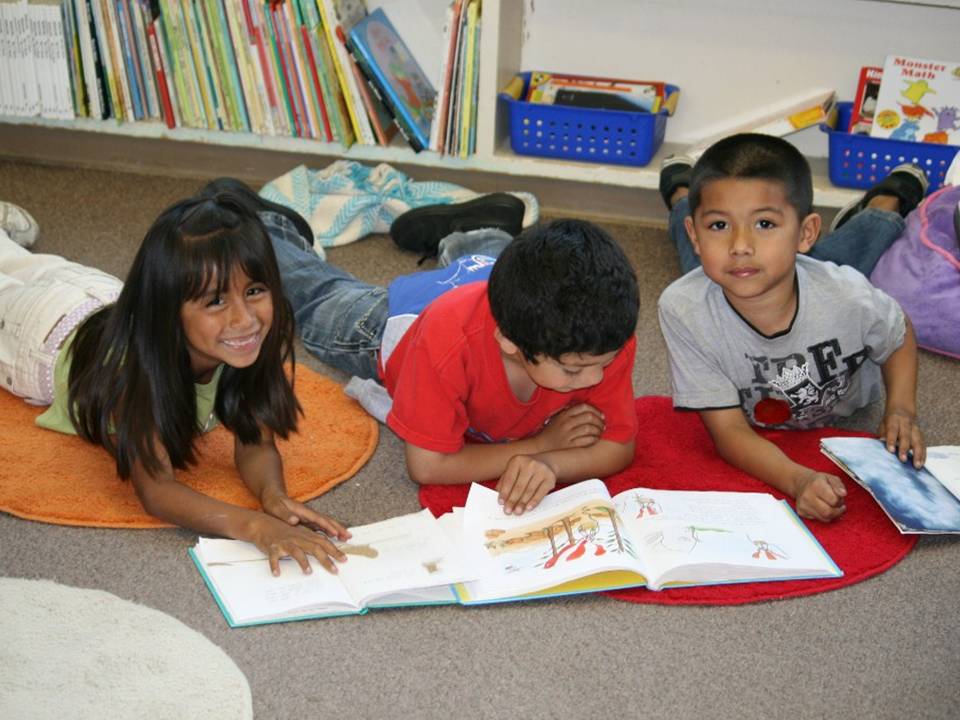by Julie Maxwell-Jolly, Programs & Policy Officer
In an increasingly globalized economy, California will need a population with the skills and understanding to thrive in multiple settings, languages, and cultures. One way to prepare our young people for this interconnected future is by providing them with the fluency in two languages, cross cultural experience and understanding, and increased brain flexibility that they can gain through dual language or two-way immersion (TWI) programs.
Two-way immersion programs use English and a partner non-English language for instruction and classrooms are balanced between children who are English fluent and those who are English learners. Kindergarteners receive much of their schooling (from 50{dc2081ac6c5cc81baef6ff3d8b7134abf68618b2dec130d45a21090cbaafa61c} to 90{dc2081ac6c5cc81baef6ff3d8b7134abf68618b2dec130d45a21090cbaafa61c}) in the partner language, adding more English instructional time every year until fourth grade when instruction is equally balanced between English and the partner language. These programs provide well-documented advantages to both English learner and English fluent students. They result in bilingualism and biliteracy for all students and in closing achievement gaps for EL students. And these positive effects of two-way immersion programs are long-lasting: the success for students who participate in TWI in elementary school persists through their secondary schooling.
One of the identified contributors to improved outcomes for students who participate in dual immersion is that advanced bilingual competence has positive effects on the brain including enhanced problem-solving skills, memory, reading abilities, and math and science reasoning. An advantage of TWI for English learners is that academic language skills developed in the first language form the foundation for the literacy skills in the second, so that EL students in TWI programs benefit from building a strong foundation of first language skills. In addition, TWI uses students’ first languages to convey difficult academic concepts before they have a level of proficiency to understand these concepts through instruction in English. This provides EL students with access to complex information and keeps them from falling behind in academic subjects while they are still learning English. Finally, integration of English learners and English fluent students plays an important role in students’ success. Children learn from each other and learn to respect each other in TWI classrooms and peers who provide strong English language models are an important contributor to EL students’ language development.
These programs are not without their challenges. A significant difficulty for two-way immersion programs has been that philosophical differences and political controversy, principally over using a non-English language for instruction, have often overshadowed research findings highlighting their successes. These differences resulted in California’s Proposition 227, which made it more difficult for parents of EL students to choose such programs for their children. A related challenge is limited capacity—finding well-prepared teachers to provide two-way instruction is challenging in many districts, particularly in view of the significant drop in the number of teachers completing the necessary credentials after Proposition 227. Nonetheless, these challenges are being met by an increasing number of schools and districts that see the value of TWI programs for their students.
If we want a future for California that includes young people from all backgrounds who complete their K-12 educations prepared to cooperate, communicate, and work productively alongside a range of diverse friends and colleagues; compete successfully in a globalized economy, and; effectively use their brain power and understanding to solve complex problems—then we should be considering dual language immersion programs, and using the flexibility provided by the local control funding formula to build the capacity and understanding that can make these programs possible. For more information on two-way immersion education, read my CSBA brief on the CSBA website.
Julie Maxwell-Jolly, Ph.D. is a Policy & Programs Officer with the California School Boards Association.







Be the first to reply